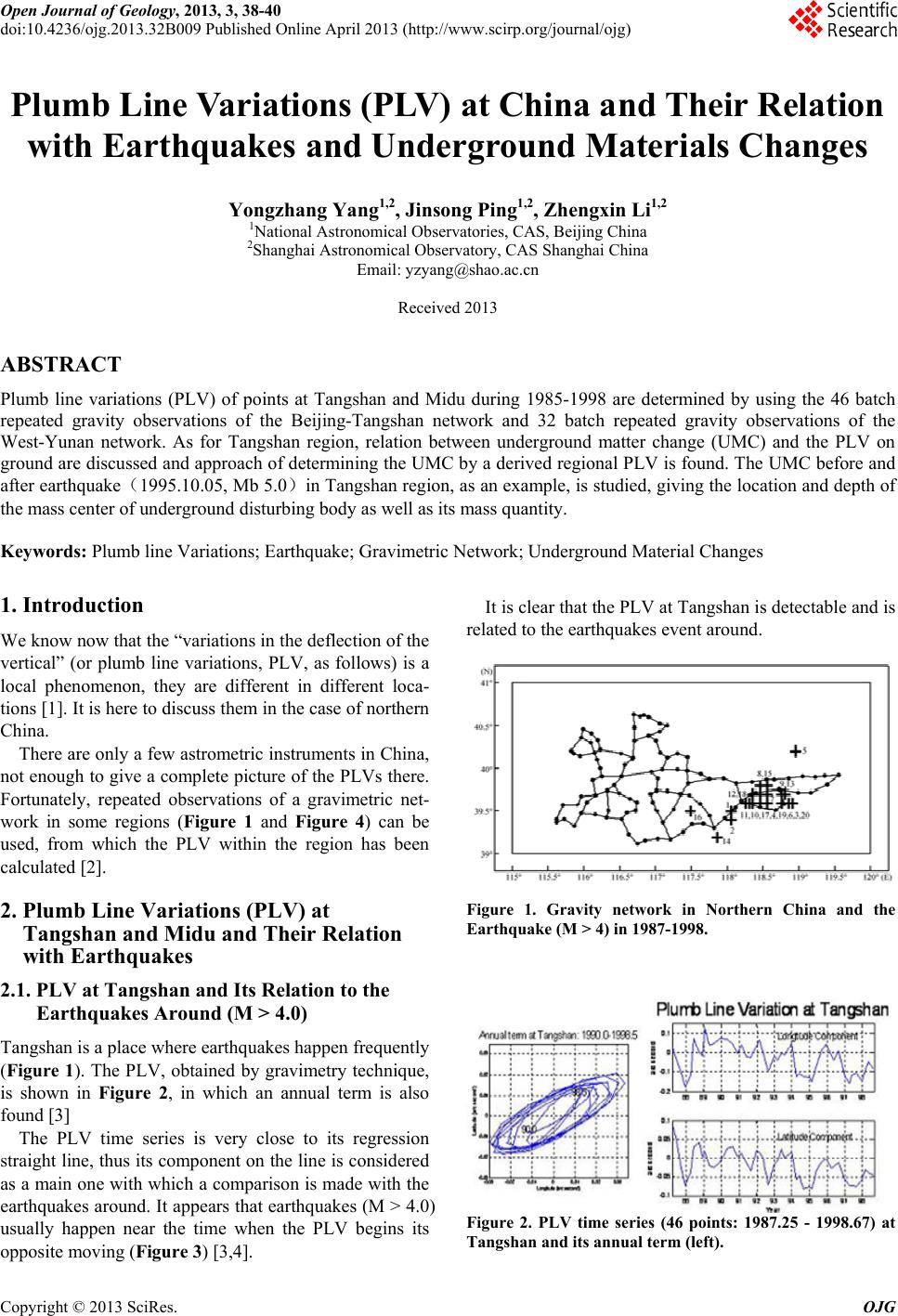
Open Journal of Geology, 2013, 3, 38-40
doi:10.4236/ojg.2013.32B009 Published Online April 2013 (http://www.scirp.org/journal/ojg)
Plumb Line Variations (PLV) at China and Their Relation
with Earthquakes and Underground Materials Changes
Yongzhang Yang1,2, Jinsong Ping1,2, Zhengxin Li1,2
1National Astronomical Observatories, CAS, Beijing China
2Shanghai Astronomical Observatory, CAS Shanghai China
Email: yzyang@shao.ac.cn
Received 2013
ABSTRACT
Plumb line variations (PLV) of points at Tangshan and Midu during 1985-1998 are determined by using the 46 batch
repeated gravity observations of the Beijing-Tangshan network and 32 batch repeated gravity observations of the
West-Yunan network. As for Tangshan region, relation between underground matter change (UMC) and the PLV on
ground are discussed and approach of determining the UMC by a derived regional PLV is found. The UMC before and
after earthquake(1995.10.05, Mb 5.0)in Tangshan region, as an example, is studied, giving the location and depth of
the mass center of underground disturbing body as well as its mass quantity.
Keywords: Plumb line Variations; Earthquake; Gravimetric Network; Underground Material Changes
1. Introduction
We know now that the “variations in the deflection of the
vertical” (or plumb line variations, PLV, as follows) is a
local phenomenon, they are different in different loca-
tions [1]. It is here to discuss them in the case of northern
China.
There are only a few astrometric instruments in China,
not enough to give a complete picture of the PLVs there.
Fortunately, repeated observations of a gravimetric net-
work in some regions (Figure 1 and Figure 4) can be
used, from which the PLV within the region has been
calculated [2].
2. Plumb Line Variations (PLV) at
Tangshan and Midu and Their Relation
with Earthquakes
2.1. PLV at Tangshan and Its Relation to the
Earthquakes Around (M > 4.0)
Tangshan is a place where earthquakes happen frequently
(Figure 1). The PLV, obtained by gravimetry technique,
is shown in Figure 2, in which an annual term is also
found [3]
The PLV time series is very close to its regression
straight line, thus its component on the line is considered
as a main one with which a comparison is made with the
earthquakes around. It appears that earthquakes (M > 4.0)
usually happen near the time when the PLV begins its
opposite moving (Figure 3) [3,4].
It is clear that the PLV at Tangshan is detectable and is
related to the earthquakes ev ent around.
Figure 1. Gravity network in Northern China and the
Earthquake (M > 4) in 1987-1998.
Figure 2. PLV time series (46 points: 1987.25 - 1998.67) at
Tangshan and its annual term (left).
Copyright © 2013 SciRes. OJG